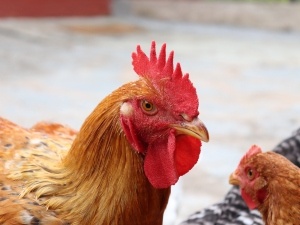
If you’re raising chickens you have to pay close attention to their health.
A variety of diseases and ailments can make your chickens sick, many of these ailments need minimal intervention but some need serious medical attention or else they will be fatal to the bird.
This article looks into why your chicken is limping and has diarrhea.
Table of Contents
Chicken limping and has diarrhea:
The poop of a healthy chicken is usually solid and clumpy, a chicken that has diarrhea is ill. If your bird has diarrhea and is limping these are signs that something is definitely wrong. Your bird may have Marek’s disease.
Mareks disease:
Mareks disease is a disease that many hope their bird never catches but unfortunately, many birds do. This is a herpes virus infection that affects a variety of birds including chickens, turkeys, quail, game fowl, and pheasants.
It’s similar to the human herpes virus in that it won’t go away once the bird becomes infected with it. Birds in the age range of 12 -25 weeks old are commonly affected by this disease but birds of all ages can also catch this disease.
This disease can affect the bird’s internal organs, including the bird’s lungs, liver, eyes, heart, ovaries, feather follicles, and nervous system
The affected body parts will develop a type of avian cancer tumor, for this reason, this sickness is sometimes described as a type of poultry cancer. Mortality rates for this disease are high.
How it’s spread:
This disease can be spread through direct contact between a sick bird and a healthy bird. It is also spread via aerosols (air from a nearby house), secretions as well as contaminated material or objects.
The disease can also be spread from one coop with sick birds, to another coop, with healthy birds, on contaminated clothing, shoes, and equipment.
The virus exists in the bird’s feather follicles, it also exists in the dander that the bird sheds. Healthy birds in the flock can catch this disease if they inhale dander left by sick birds.
This virus will be present in the air and in the coop for months if not cleaned out. If cleaned out then sick birds will simply produce more dander making healthy birds sick.
Because this disease can spread so easily controlling it can be a bit of a headache.
Other signs of this disease:
In addition to your bird limping and producing diarrhea, other signs of this disease in chickens include:
- Irregular pupils
- Paralysis of the neck
- General depression
- Paralysis of the wings
- Weightloss
- A grey iris
- Blindness
- Lack of muscle control – walking like they’re drunk
Different types of Marek’s disease will affect different birds differently, the same type of Marek’s may affect different birds differently as well.
One of your birds may be lame and produce diarrhea but another bird may not show these signs but may still have this disease.
The type that causes diarrhea and paralysis is called the neural form. Other types of Mareks include the ocular form and the visceral form.
Treatment:
Unfortunately, there is no treatment for this disease. Because there is no treatment for this disease, it is recommended that your birds be vaccinated as soon as possible to protect against this disease.
Vaccination:
Vaccination is your best defense against this disease.
If you’re wanting to buy chicks from a hatchery it is recommended that you have these chicks vaccinated against this disease before they get to you.
Supportive care:
Another way that you can help your birds is to keep their stress levels low. Stress plays a large role in inciting this disease. Keep birds stress free by:
Ensure that your birds are eating high-quality food, and the correct food, for their age.
When introducing new chicks, or new adult birds, to your flock, keep the new birds in quarantine for at least 4 weeks. This allows you to observe them and make sure that they are healthy.
Avoid overcrowding in the flock, overcrowding is stressful to birds.
Ensure that birds don’t become stressed over food shortages by making sure that your birds have access to enough food and water in their feeders and waterers
Make sure that you practice good sanitation and ventilation in your coops.
If you enjoyed this article then you may also be interested in other chicken related articles. Here are some articles that you may be interested in: Chicken Walking On Hocks, Chick Walking On Hocks, Chicken Has A Broken Knee Joint, Chicken Has A Broken Ankle, Rooster Has A Broken Leg

